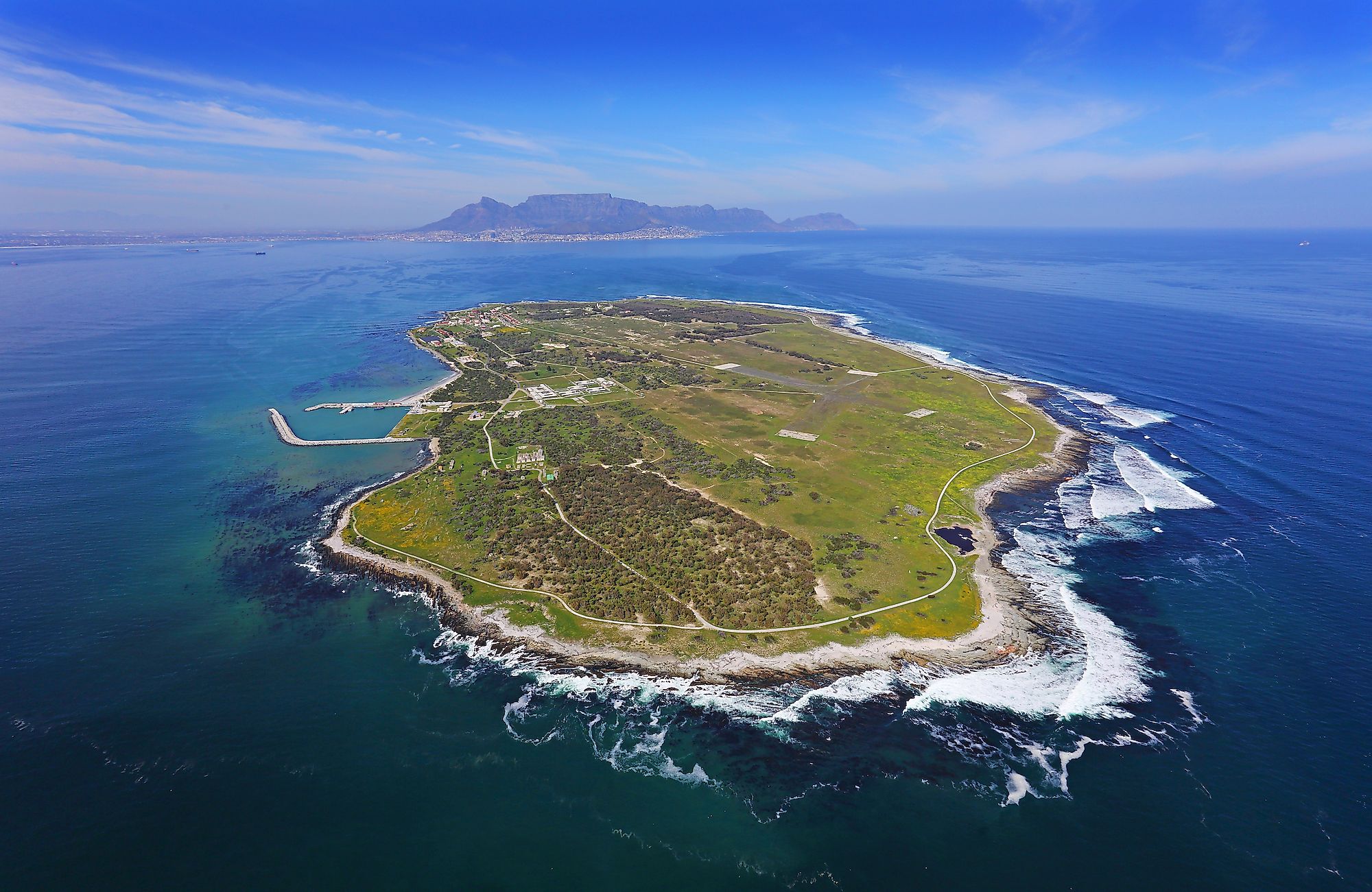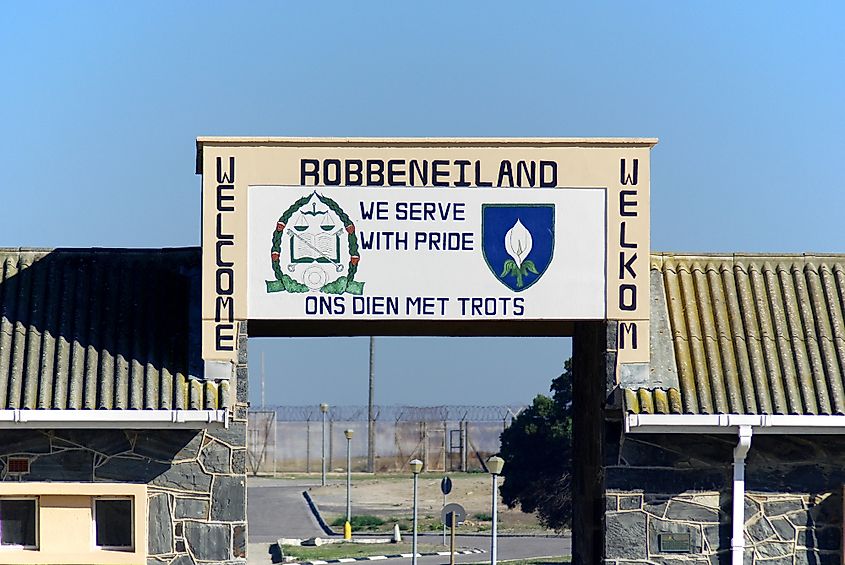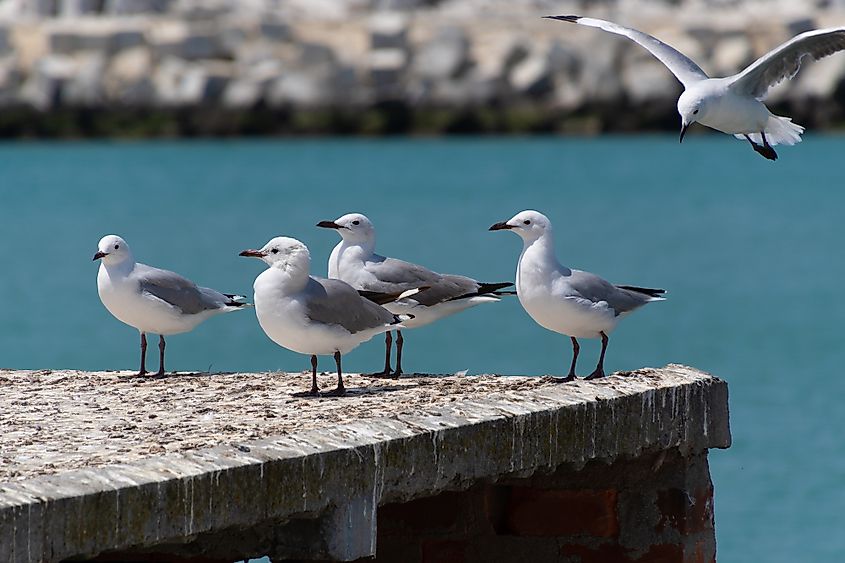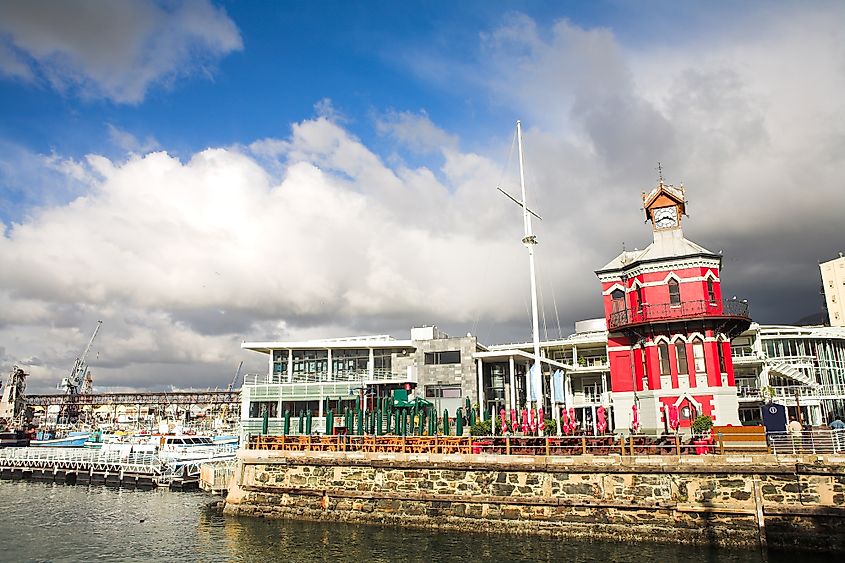
Robben Island
Robben Island is an island in the Atlantic Ocean in Table Bay, approximately 7 kilometers west of the mainland and 10 kilometers north of Cape Town, South Africa. Administratively, the island is part of the Western Cape Province in southwestern South Africa. The name “Robben” is a Dutch translation for “seals,” which once dominated the island's surrounding water. Thus, the Afrikaans called the island “Robbeniland,” translating to “Seals Island.” The Dutch and British established a political prison on Robben Island from the late 17th century to 1996. The first South African president, Nelson Mandela, spent 18 years on the island as a prisoner.
Geography Of Robben Island

Robben Island is located at the entrance of Table Bay, approximately 10 kilometers from Table Bay Harbor’s north. It is situated about 7 kilometers off the southwestern coast of South Africa. The island is approximately 10 kilometers north of Cape Town’s city center and 6.9 kilometers west of Bloubergstrand. The island is bordered on the east by the northern end of the Cape Peninsula. Robben Island is the only main island in Table Bay. The island is connected to the mainland (Cape Town) by ferry services.
Robben Island is a low-lying island with a surface area of approximately 5.18 square kilometers. The island is 3.3-3.57 kilometers long (from north to south) and 1.9-2.06 kilometers wide and is surrounded by about a 2-km maritime landscape that acts as a buffer zone. Robben Island was once a pinnacle of an ancient mountain (now submerged) that was linked to the Blouberg Mountain. The island experiences a Mediterranean climate (similar to the Cape Peninsula), characterized by dry, hot summers and cool winters. However, the winds are much stronger and winter is colder on the island than on the peninsula.
Wildlife In Robben Island

Robben Island’s natural landscape has undergone major transformations since the 17th century. The land use and settlements have affected the natural environment, with much of its flora and fauna being introduced species. During the pre-colonial period, the indigenous vegetation was typical of the mainland’s vegetation. Today, the island’s flora is divided into wooded plants in the southern and eastern sections and grassland/herbaceous in the north and west. The imported plant species include eucalyptus, manatoka, and Rooikrans.
The island’s indigenous fauna comprised mainly penguins, seals, mole snakes, duikers, and pelicans. The island derives its name from the seals that were once abundant in the area but had been hunted to extinction by the 19th century. However, penguins are still present on the island, although they are categorized as endangered species. Guinea fowls, rabbits, and chucker partridges are also present on the island. The introduced species include bontebok, springbok, eland, ostriches, and European fallow deer. Several seabirds also breed on Robben Island, including African penguins, Hartlaub's gulls, and cormorants.
Brief History Of Robben Island

Robben Island was discovered in 1488 by Portuguese explorer and mariner Bartolomeu Dias. The Portuguese navigators used the island for many years before the British and Dutch arrived in the area. In the 16th and early 17th centuries, the Dutch and British used Robben Island as a stopping point and refueling station. In the mid 17th century, settlers of the Cape Colony kept their sheep on the island to protect them from wild animals. These settlers also hunted seals for their skin and oil.
Robben Island was used as a political prison, first by the Dutch then the British, from the 17th century to the 1990s. Autshumato, a Khoekhoe chief who worked for the European during the Dutch settlement, was among the first prisoners to the island. Several African leaders were also imprisoned on the island after the Xhosa War, including Makanda Nxele. The island also hosted lepers and the insane from 1846 to 1931. A lighthouse was installed on Minto Hill in 1864 to reduce maritime accidents around the island. The island was fortified during World War II and served as a maximum prison between 1960 and 1991. However, criminal offenders were detained on the island until 1996. Robben Island was transformed into a museum in 1997 and designated a World Heritage Site in 1999.











